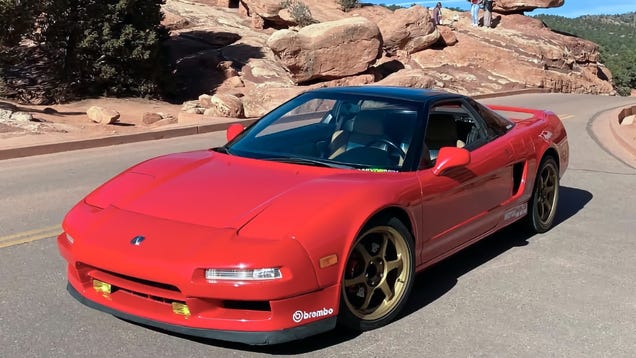This is the third installment of the series.
Part I
Part II
Part III




The Mark V Designer's Series had been phenomenally successful, so Lincoln came to market for 1978 with variations on a theme. Cartier remained monochromatic, but changed the actual color to triple Light Champagne. Givenchy continued successfully in Midnight Jade and Chamois, with a sumptous velour interior standard and leather as a credit option. Bill Blass switched from Navy and Chamois to a subtle Dark Cordovan with a Light Champagne top, and Emilio Pucci went wild, offering a Silver Metallic car with two tone oyster and maroon leather interior Pucci silk sunvisors , a black cayman grain landau top, and wild special stripe. It was stunning. Several new options debuted this year, includting turbine vane wheels and a simulated convertible top option, which woudl catch the eye of one of the designers the following year. Luxury groups continued to thrive as well, but the most luxurious Lincoln in 1978 wasn't a Designer Series.

An even more special edition came along that year in the form of the Diamond Jubilee Edition Mark V. Fully loaded with every conceivable option, it, along with a companion Thunderbird, celebrated the 75th Anniversary of the Ford Motor Company, the Diamond Jubilee was Diamond Blue or Jubilee Gold and featured color matched tops, wheels, grilles and even bumper strips. The deck lid was padded to match the top, the dash top was hand stitched leather, the bucket seats and door panels were unique, and even a tool kit and umbrella were fitted. The opera windows featured imitation diamond chips, HFII had been willing to pay for real ones but the crime rate in Detroit deterred him- the notion of smash and grab was very real. Stunning, over the top luxury to mark the 75th Anniversary in a year which was not all good news for Ford- they actually recalled more cars than they sold. But they looked great in their designer editions.


General Motors introduced their special edition Seville Elegante in Black and Platinum Silver, with upgraded interior and genuine wire wheels, and the Custom Biarritz Classic in Arizona Tan and Demitasse Brown to commemorate the final days of the full sized Eldorado. Some excitement came to the de Ville series as well with the limited edition Phaeton, a factory simulated convertible top on a Coupe or Sedan de Ville in three color combinations. GM also pushed out a few LXXV, a special black and silver Buick Riviera coupe (with silver leather) that wished Buick a happy 75th birthday. And while GM resisted affixing a designer label to one of its offerings directly, the marketplace rushed in where GM feared to tread. The Cadillac Seville by Gucci, a symphony of overstatement with Gucci fabric-trimmed landau top, seats and headliner, and copious garish Gucci badging, was offered by a Florida company for $22,900, inclusive of a trunk full of Gucci luggage and Aldo’s blessing, if not the General’s.






If like the Village People, the designer party was about to end in 1979, one wouldn’t know it from the offerings. The Designer Continentals were completely revamped again.
Most dramatic was the Bill Blass Edition in white with two-toned navy sides, a white leather interior piped in Navy, and a white simulated convertible top. Expressive gold striping and no fewer than eighteen BB logos completed the look. It was so far over the top, it was already half way down the other side. The Cartier continued in its monochromatic Light Champagne, the Givenchy went ultra chic with a special color, in Cristal Blue-violet with dark blue forward roof section, and Emilio Pucci outdid himself- a medium Turquoise exterior color, dark blue full vinyl roof, and white leather interior accented with blue. Of course, the Pucci sunvisors again completed the look.
In addition, the Collector’s Series Mark V and Town Car were offered, in Navy or White with sumptuous special blue Kasmin cloth interiors. They were the successors to the Diamond Jubilee of 1978, offered to commemorate the final editions of the big Lincolns before the scheduled downsizing of 1980.





Cadillac kept up its special editions with d’Elegance trim on the deVille and Brougham, Elegante two-toned Sevilles (with genuine wire wheels, bucket seats and special slick top styling) and totally restlyed Eldorado whose Biarritz Edition of featured a stainless steel and landau roof combination, which the buyer could pair with an optional sunroof or astroroof. A very special models appeared as well, the Coupe de Ville d’Marchand was a factory built special edition in Black and Slate Firemist, and featured black leather inserts and red piping in a slate interior. It was a spring offering. The mid year 1978 Phaeton edition de Villes were continued as well. The aftermarket offerings were plentiful - the Gucci Seville was alive and well. The San Remo Seville, a highly customized four place Seville convertible with beautiful craftsmanship (and a super exclusive Ultima option with freestanding headlamps) debuted, and even a Pierre Cardin Eldorado featuring elongated front fenders and custom front and rear styling (along with a sumptuous interior) was announced, although actual introduction was delayed until 1980. They were sold in very small numbers, mostly to celebrity clients like Jack Webb of Dragnet fame.
Although the designer offerings would continue in 1980, their days were numbered. The newly downsized Continental Mark VI sold at approximately one-third the rate of its predecessor. The Biarritz and the Seville Elegante, newly styled as an expressive “bustleback” hardtop sedan took off like wildfire. The highline car would prosper in the Dynasty years, but for the designer cars, their days were as fleeting as the Jimmy Carter Presidency.




No comments:
Post a Comment